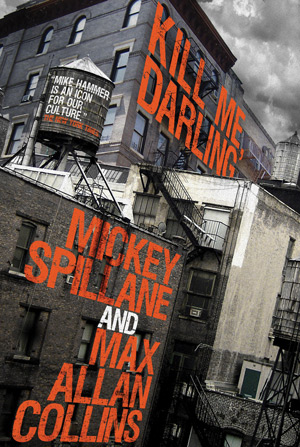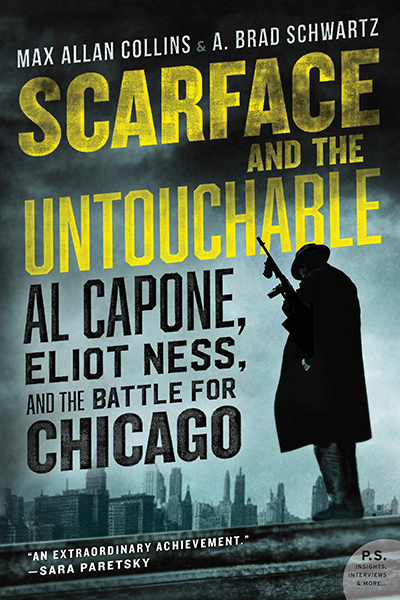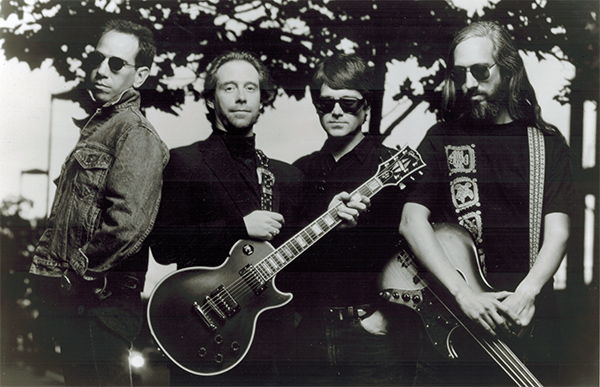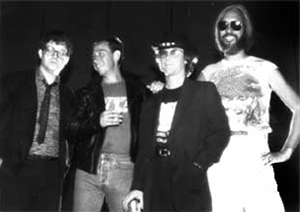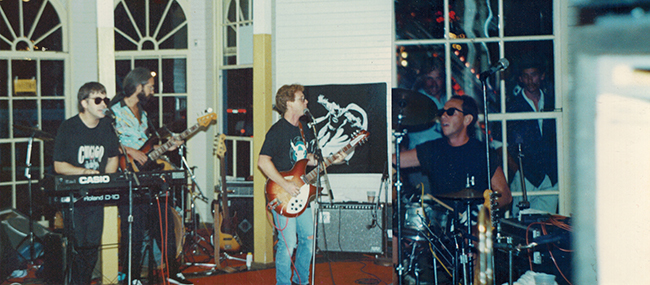Another book deal has popped up, this time BookBub, and it applies to Kill Me, Darling, one of my favorite of the posthumous Spillane collaborations. I was working from a false start on The Girl Hunters where Velda’s disappearance didn’t have to do with Russia and espionage, but rather Florida and vice. (So in the Hammer canon Velda now disappears twice…not counting kidnappings.)
Anyway, I don’t understand BookBub and if someone wants to straighten me out, I’m fine with that. But it would appear this deal lasts for about a month. Like the still ongoing Girl Most Likely and Girl Can’t Help It offers, Kill Me, Darling is 99-cents on e-book. Unlike the Amazon deal, this extends to Nook and other e-book platforms.
Here’s how BookBub describes Kill Me, Darling:
From the authors of Murder Never Knocks. Private investigator Mike Hammer heads to Miami to find his ex-lover Velda — and figure out her connection to the disturbing murder of her old colleague. “Mike Hammer is undeniably an icon of our culture” (The New York Times).
$0.99 (regular price $7.99).

You may have seen my Seduction of the Innocent bandmate Steve Leialoha’s query to me in the comments last week, regarding my current project, Too Many Bullets, Nate Heller looking into the RFK assassination. He asked me if I’d ever talked to Miguel about the night of the assassination at the Ambassador Hotel, saying that Miggie and his mom were there that night.
This was news to me, and I kicked myself, because I’ve known for years I would eventually do Bobby Kennedy, and I never discussed it generally with Miguel. Why would I? You might ask.
Well, Miguel was a big Nate Heller fan. He always requested signed copies to read on set in his trailer (actors have a lot of down time). We talked Heller a lot. We were hoping to do a movie at one point with him in the lead (the novella Dying in the Post-war World was written with that in mind). Didn’t happen but I sure do wish it had.
Miggie’s (and my) pal Bill Mumy, a fellow Seductive One, was…and probably still is…a Heller fan, too. Like Miguel, he has read Heller novels during on-set downtime, and after all he wrote the song “True Detective” for our CD, The Golden Age. I’m proud to have these two among Heller’s supporters. And it hurts that Miguel didn’t get to read any Heller past Ask Not. Maybe, somewhere, Miggie and Bill Crider and Ed Gorman are in a book club, keeping tabs on me.
Chris Christensen, the other Seduction bandmate, also reads Heller, or anyway he used to. Chris did the music for my documentaries Mike Hammer’s Mickey Spillane and Caveman: V.T. Hamlin and Alley Oop). Very talented guy, and like all the Seductive Ones nice and fun.
If you were unaware of my friendship with Miguel, or even if you were and this is old news, you may wish to read this post from January 2017. It’s one of my favorites.
That Miguel could have shared his memories about a tragic, historic night about which I have yet to write gives me an extra pang in an already sensitive part of my psyche. But it also points out how weird the experience of writing Nathan Heller can be.
Miguel and his mom (Rosemary Clooney!) had been at the Ambassador Hotel that wonderful-turned-terrible night, and in an odd way that connected me. I already had an odd Kennedy connection because Jackie Onassis had been my editor on a book I co-wrote with a political figure (a ghost job). I had spoken on the phone with her many times and got to know her in that “phone friendship” way that can be very real. I have a letter she wrote me saying what a great job I did on the book. My University of Iowa mentor, Richard Yates, had been a Bobby Kennedy speech writer, as I learned after I plucked a copy of The Enemy Within off my mentor’s shelf and saw that it had been warmly signed to him. My collaborator Dave Thomas is a fellow assassination buff who knows Paul Schrade and promises to connect me with him. Paul Schrade was standing in back of Bobby Kennedy that night and also got shot in the head, but survived and is now 97 and still researching the case he was in the middle of.
This brings up an interesting point or two. I never know, in doing a Heller, whether I should talk to living participants in the cases I explore. They tend to have their own agendas and I can get caught up in them. For years after writing Stolen Away, I got phone calls from two of the men who thought they were the Lindbergh baby (and one might have been). I need to have my own point of view. My own take.
The other thing is weirder yet. Barb and I were on our honeymoon in Chicago – we were married on June 1 – when the Robert Kennedy assassination occurred in the early hours of June 5. We were staunchly anti-war and were RFK supporters. The news, made strange by not being home at the time, hit us hard, but…and this is the weirdest thing…I remember that I felt (can’t speak for Barb) that American political assassination had become just something to be expected. I was in high school when JFK got it, and not long before Bobby was killed MLK had been taken down, and I was at least vaguely aware of Malcolm X being in the same category. I remember thinking, “So this is how it’s going to be now.”
Maybe the lone nuts decided to find a new hobby (they certainly have one now). Or maybe the powerful figures in the darkness moving chess pieces decided their moves were getting too obvious. But the next time I had a similar feeling was on Jan. 6, last year. I paused writing in my office and went downstairs to get something to drink, and flipped on the TV, and saw Trump’s mob crawling over the face of the Capitol like bearded ants.
And with a shrug I said softly to nobody, “That’s about right.”
It looked like this was how it was going to be now.
Getting back specifically to Nate Heller, my overriding job with all of these cases – unsolved or controversially solved – is to write a hard-hitting private eye novel, with the humor and sex and violence that people expect out of me. That I expect out of me. Part of a Heller novel can be disturbing and even sad, like Chinatown. But it also has to be exciting and interesting and, yes, fun. Like Chinatown.
So how do I face something as terrible, as nation-shaking as Bobby Kennedy’s death without trivializing it?
That is very much on my mind right now. Serving history. Serving my readers. And not doing either of them an injustice.
Here’s a story about Mickey Spillane walking out on I, the Jury in 1953. Maybe it’s true. The sentiment on his part is accurate. But the movie’s actually pretty good.
The great James Reasoner writes about the collection of the Mike Hammer comic strip that I edited and introduced for Hermes Press a while back.
Nice Road to Perdition (the film) essay here.
This review looks at Headed for a Hearse by Jonathan Latimer and my introduction (which was written some time ago for an earlier edition, though the writer seems unaware of that). It’s a pretty good essay but drifts into the area of judging yesterday’s fiction by today’s politically correct attitudes. The reviewer better not read the first chapter of Farewell, My Lovely.
M.A.C.
